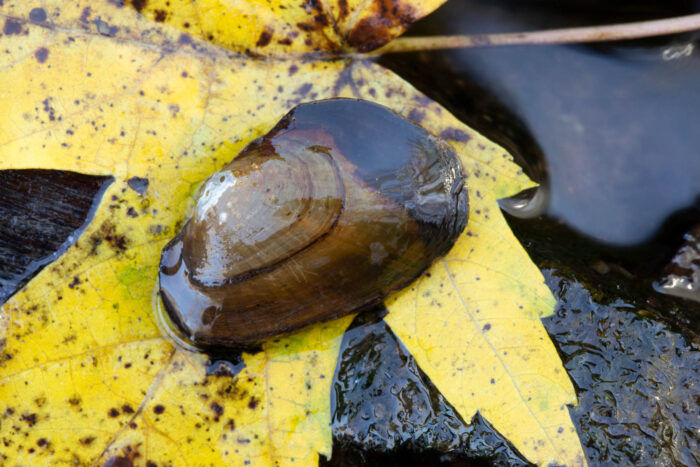Green Floater
Lasmigona subviridis
The green floater is a small freshwater mussel that cleans water by filter feeding.
This section shows one large critter image at a time. Use the thumbnails that follow to select a specific image to display here.

This gallery contains a grid of small thumbnails. Selecting a thumbnail will change the main image in the preceding section.
Appearance
The green floater is a small mussel with an oval, trapezoidal-shaped shell that is yellowish-brown or olive green in color. The inside of its shell is pearly white and gray. The green floater grows to a maximum of 2.2 inches.
Feeding
Freshwater mussels such as the green floater are filter feeders. This means they intake water, consume microscopic matter such as bacteria, algae, and plant and animal debris, and expel cleaner water.
Predators
Mammals such as muskrats, otters and raccoons are predators of the green floater and other freshwater mussels.
Reproduction and life cycle
Spawning occurs during the late summer or early fall months. During winter, green floater adults typically keep their larvae (called glochidia) in their gills until they mature into juveniles to be released into the water column in the spring. This form of reproduction is unique to green floaters. Most freshwater mussels will instead release glochidia into the water where they attach to host fish and remain on that host fish until they mature. Green floaters practice this reproduction method as well, but it’s unknown how often.
Did you know?
- Green floaters are hermaphroditic, which means they have both male and female reproductive tissue and have the ability to self-fertilize, increasing their probability of fertilization.
- Green floaters bury themselves as deep as 15 inches into the substrate to avoid being carried by currents.
- The green floater is one of the only freshwater mussels that does not require a host fish for its glochidia, or larvae.
- Because they are ectothermic (cold-blooded), the green floater’s activity level is greatly reduced during colder months.
Sources and additional information
- Green Floater - U.S. Fish & Wildlife Service
- Green Floater (Lasmigona subviridis) - United States Geological Survey
- Green Floater Guide - New York Natural Heritage Program
- Green Floater - North Carolina Wildlife Resources Commission
